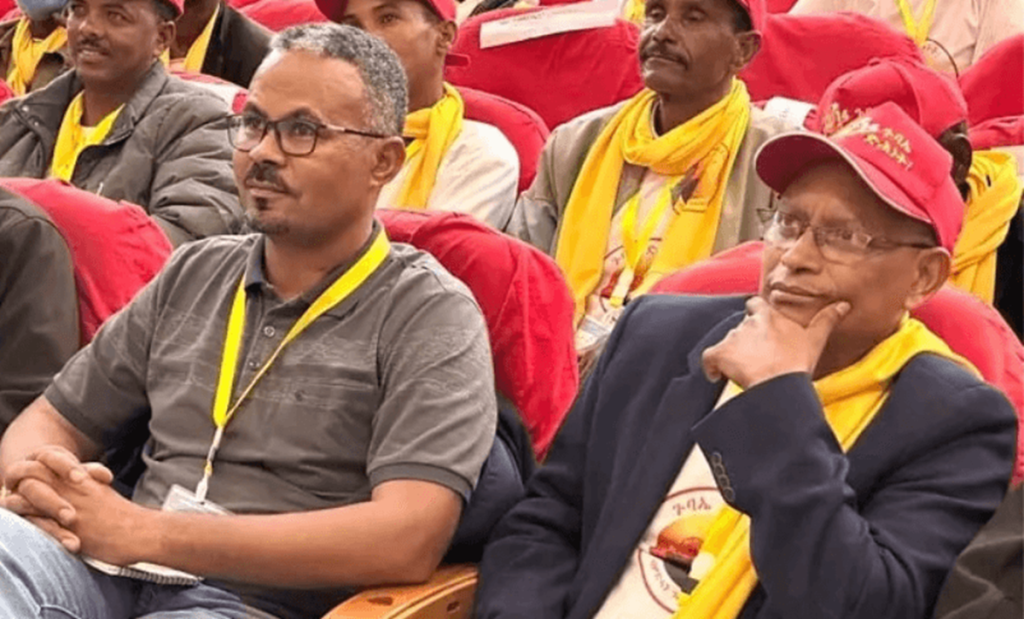Part II
The Fano Movement: A Symbol of Courage and Defiance
By
Worku Aberra (PhD)
In this instalment, I will use selected healthcare indicators and the poverty rate to illuminate the stark marginalization faced by the Amhara community during the TPLF era of 1991—2018. The purpose of this essay is to shed light on the budgetary disparities that have significantly harmed the health outcomes of the Amhara people. This approach allows us to navigate the relevant data to illustrate the Amhara community’s plight without overwhelming readers with excessive statistics.
Economic development indicators, particularly the proportion of households with access to essential healthcare services, provide a lens through which we can scrutinize the impact of ethnicity-based economic policies in Ethiopia. Since health is considered a global public good, Western governments, particularly the US government, and international lending organizations have prioritized funding the healthcare sector in Ethiopia, but the funds have been inequitably distributed, resulting in skewed distribution of health services. Perhaps more than any other metric, the allocation of healthcare services indicates a strong bias in the distribution of development funds.
The consequences of the uneven allocation of healthcare funding are significant. Restricting sufficient funding for health services in a region is equivalent to subjecting its residents to prolonged illness and premature death. Adequate funding is essential for providing timely diagnoses, appropriate interventions, and essential medications. Insufficient funding not only violates the fundamental right to basic healthcare, but also weakens a community’s economic development.
Health outcome indicators
Table I provides compelling evidence of the Amhara region’s marginalization in the healthcare sector. It presents access to improved drinking water, improved sanitation, and age-appropriate vaccination rates. The indicators serve as clear markers of the disparities in healthcare access across Ethiopia in 2019. The data, obtained from the USAID demographic household survey, underscore the glaring disparities in healthcare provision across Ethiopia’s regions during the TPLF era.
The Amhara region’s marginalization is most pronounced within the health sector, perhaps more than in any other sector. Some scholars have highlighted the inequitable allocation of healthcare resources under TPLF rule. The provision of healthcare services to the so-called ‘privileged Amharas’ falls below the national average, but the situation is even worse in the Afar and Somali regions, with health-threatening results.
Medical research shows that drinking unclean water and improper human waste disposal have severe health consequences for individuals and communities. Unclean water often contains harmful pathogens such as bacteria, viruses, and parasites. Consuming water contaminated with these pathogens can cause waterborne diseases, namely cholera, typhoid, dysentery, and hepatitis A. The high incidence of these types of diseases in the Amhara region, as indicated by a recent study by Lancet, is the result of inadequate funding.
Drinking contaminated water can also lead to repeated episodes of diarrhea and vomiting, affecting the body’s ability to absorb nutrients from food. This contributes to malnutrition, stunted growth in children, and high mortality rates. It can also compromise the immune system.
An individual’s health status and the individual’s economic activity are interrelated. Negative health outcomes have adverse economic consequences for both individuals and communities. Diseases caused by drinking unclean water and improper waste disposal reduce productivity, undermine economic growth, and perpetuates poverty. The prevalence of such diseases is a significant factor contributing to the high poverty rate in the Amhara region (See table II below). The situation creates a vicious cycle of poverty and disease.
Table I also indicates that the Amhara region has a lower rate of vaccination rate than Tigray, which has a higher rate of vaccination than even the city of Dire Dawa. The low incidence of age-specific vaccination in the Amhara region has contributed to the spread of preventable diseases in the region. It should be noted that the Afar and Somali regions have the lowest vaccination rates in the country.

Place of child delivery in 2013
Source: USAID (2016). Demographic and Health Survey
Figure I presents data on the percentage of mothers delivering babies in healthcare facilities across Ethiopia in 2013. It highlights once again the uneven distribution of healthcare facilities during the TPLF rule. In 2013, Tigray had the highest access to healthcare facilities among all regions, once again surpassing the city of Dire Dawa. When comparing regions, excluding Addis Ababa, the proportions of mothers who gave birth in healthcare facilities ranged from approximately 68% in Tigray to 18% in Afar. By contrast, only around 35% of Amhara mothers delivered their babies in healthcare facilities in 2013.
Medical science shows that delivering babies in unsanitary home environments poses significant risk to both maternal and infant health. The absence of proper medical facilities, skilled healthcare professionals, and hygienic conditions amplify the risk of complications. Complications that could be averted with adequate care become life-threatening. Equally concerning are the long-term physical and psychological harm that both mother and baby may endure due to inadequate care during childbirth at home.
The cumulative effect of low income, unhygienic environments, insufficient funding, subpar vaccination rates, and malnutrition manifests in the prevalence of stunted growth among children in the Amhara region. Figure II displays the percentage of children with stunted growth in 2013 in Ethiopia. It shows that the Amhara region has the highest prevalence of stunted growth throughout the TPLF’s years of governance.

The main cause of stunted growth is poverty, a lasting legacy of skewed economic policies. Families struggling with financial constraints often find themselves ensnared in a cycle where access to sufficient and diverse food becomes a luxury. Their access to limited resources undermines their ability to provide well-rounded and nutritious meals, perpetuating a cycle of malnutrition that leads to stunted growth in children.
Poverty and inequitable distribution of resources
Poverty, caused by the lack of appropriate and discriminatory government policies, hinders families from accessing essential nutrients for their children. The inability to afford nutrient-rich foods, protein sources, and balanced diets results in children being fed meals that are deficient in critical vitamins, minerals, and proteins vital for optimal growth. The ‘privileged’ Amhara region has had limited access to healthcare services, as discussed earlier. Families in the Amhara region are less likely to receive the necessary medical services, including vital prenatal, postnatal care, and routine check-ups than families living in certain regions. This deficiency in healthcare, especially during crucial stages of pregnancy and early childhood, contributes to maternal malnutrition and intensifies the risk of stunted growth among children.

The poverty rate in Ethiopia in 2019
The incidence of poverty in Ethiopia is high, despite the triumphant claims made by the government and the World Bank in substantially reducing the level of poverty since the TPLF came to power. Researchers from Oxford University have shown that the rate of poverty in Ethiopia far exceeds the figures officially presented by both the Ethiopian government and the World Bank. The government and the World Bank claim that the rate of poverty was 24% in 2016, but research from Oxford University reveals a significantly higher estimate. In fact, the unweighted average poverty rate in Ethiopia for 2019 stood at close to 60%, with significant variations across the regions. Evidently, the incidence of poverty among the supposedly ‘privileged’ Amharas was particularly acute, nearing 70% in 2019.
The extensive literature on poverty underscores its wide-ranging economic and non-economic consequences. Poverty restricts access to clean water, proper nutrition, and basic healthcare, making people more susceptible to diseases. Limited resources also affect educational opportunities, hindering regular school attendance and access to quality education. As a result, literacy rates remain low, skill development is hindered, and a workforce lacking essential competencies emerges. This has been the experience of the Amhara region during the governance of the TPLF and the prosperity party.
Poverty also affects fertility rates. Low-income regions or households often exhibit high fertility rates. Poverty and fertility are intrinsically linked through a multitude of economic, psychological, and social factors, but in Ethiopia ethnic-based political considerations have compounded the challenges experienced by marginalized communities regarding family planning.
Ethnic-based political considerations of sterilization
Driven by concerns about the relative share of their ethnic groups within the total population, politicians tend to resort to tactics that diminish the share of the ‘unwanted’ other. In Ethiopia, this involves two main strategies. First, to starve the ‘unwanted’ region (s) of development funds. Second, the use of covert sterilization methods, such as the reported instances of young women in the Amhara region receiving injections under the guise of vaccinations, which has resulted in the country’s highest incidence of sterilization through injections, as the figure below shows.

In 2013, the Amhara region exhibited the highest prevalence of injection-based sterilization among married women. Advocates of the EPRDF government might claim that these women consented to the injections. However, it is unclear why illiterate women in the Amhara region consent to sterilization by injections at a significantly higher rate than their well-educated counterparts in Addis Ababa. If consent was the sole factor, there should be no substantial gap between the proportions of women in the Amhara region who use contraceptive pills (3%) and the choice of injection sterilization (nearly 30%). The crux of the matter lies in the fact that contraceptive pills are identifiable and visible, even to illiterate women, whereas injections remain concealed from their awareness. This underscores a major discrepancy that raises concerns about the nature of consent and information dissemination surrounding sterilization through injection.
Forcing women to undergo sterilization through deceptive means is unethical; it undermines autonomy, informed consent, bodily integrity, and reproductive rights. Deception subverts informed consent, a cornerstone of ethical medical conduct. As physicians know well, individuals have the right to be fully informed of medical procedures, their implications, and potential risks. Stripping them of accurate information constitutes a betrayal of the patient’s autonomy and trust. Deception in sterilization erodes the essential trust between healthcare providers and their patients. This breach of trust corrodes the integrity of the healthcare system, exacerbating the vulnerability of women seeking advice for their medical needs.
Throughout history, the practice of deceptive and forced sterilization disproportionally affects marginalized and vulnerable groups, perpetuating cycles of poverty and reinforcing social inequities. Manipulating women’s reproductive choices without their awareness or consent violates their human rights. That has been the fate of many Amhara women, particularly under the EPRDF. Deceptive sterilization disregards the cultural context that shapes Amhara women’s lives. Deceptive sterilization cab also be considered a form genocide, according to the UN.
Conclusion
In this instalment, I’ve used specific health outcome indicators alongside the poverty rate to demonstrate the marginalization experienced by the Amharas. These indicators also underscore that other groups, particularly the Afar and Somalis, have experienced even more pronounced marginalization under the TPLF and the Prosperity Party. This means that the pursuit of justice by the Amhara people is intertwined with the broader quest for justice in Ethiopia. Spearheaded by the Fano movement, the struggle of the Amhara people encompasses aspirations for justice, equality, and freedom for all. To realize these objectives, it becomes imperative for the Fano to synchronize their pursuit of justice with other marginalized and oppressed groups, forging a united front against the regime.
(This is the part II of a three-part instalment)
Worku Aberra (PhD) is a professor economics at Dawson College, Montreal, Canada.










